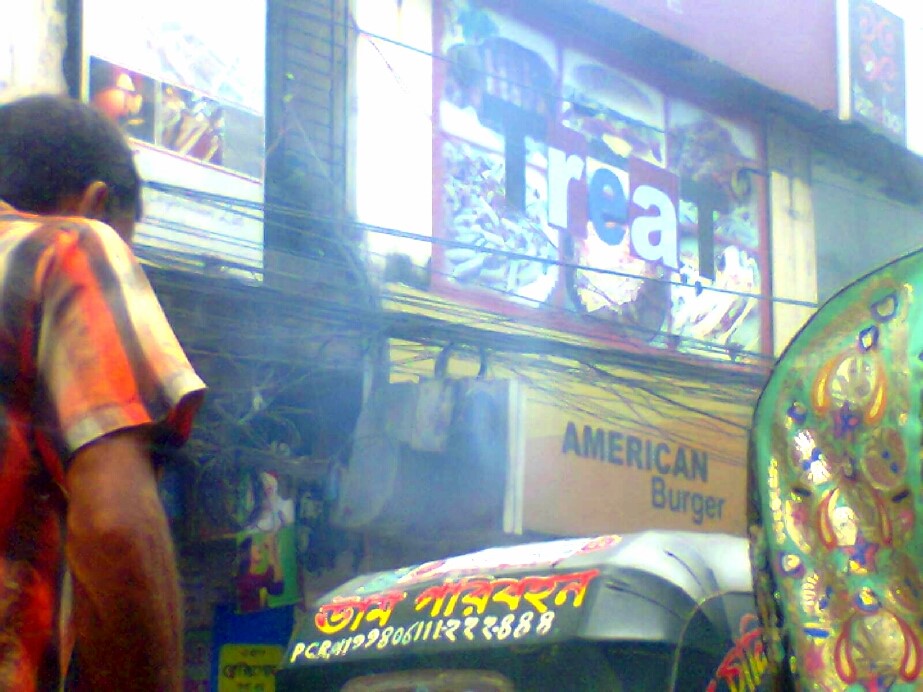“Restaurant boom adds to urban heat sinks”
December 1 Urbanisation is often cited as a parameter of how well-developed a city is, writes Monica Islam, 26, a Commonwealth Correspondent from Dhaka in Bangladesh. But urban growth can mean new problems and the need to find creative solutions.
Urbanisation is often cited as a parameter of how well-developed a city is, writes Monica Islam, 26, a Commonwealth Correspondent from Dhaka in Bangladesh. But urban growth can mean new problems and the need to find creative solutions.
Urban planning and regeneration are increasingly being sought as solutions to haphazard urban growth.
Urban planning has emerged as a field of study in itself. Under the purview of urban planning is the effect of urbanisation on the climate, with heat waves generated by rapid urban growth contributing to global warming. One of the urban heat risks emanates from restaurants.
In Bangladesh, dining out is the primary means of recreation. To capitalise on this social phenomenon, restaurants have mushroomed throughout the country. These restaurants release clouds of dark, pungent smoke into the surrounding environment. Thanks to central air-conditioning systems, large windows and other cross-ventilation facilities, the indoors remain relatively smoke-free, but the streets become engulfed in smoke. Passers-by are faced with blistering heat.
One way this urban heat emission from restaurants can be tackled is through the use of kitchen hood vents with multiple layers of filters. These vents draw in smoke, grime and grease. The filters condition the absorbed gases and trap micro-dust particles before releasing them into the air. As a result, the air that is pumped out of the restaurant kitchens and into the open street atmosphere is less polluted. The installation of kitchen hood vents will undoubtedly minimise urban heat waves, and increase the green efficiency of any restaurant.
Another means of tackling this urban heat is to encourage the use of fresh edible oil in cooking. When cooking oil is over-used, the resulting oil becomes thick and greasy and loses much of the nutritional value. Using stale oil may enhance the taste and appearance of the food, but also generates more pollution and heat. Some restaurants defy health laws and use oil adulterated with tar, diesel and petrol. Besides being unfit for consumption, these generate tremendous amount of heat and smoke when heated and re-heated for cooking. Switching to edible oil and using fresh oil every time one cooks will greatly reduce urban heat.
Architecture plays a significant role in balancing urban temperature. Spacing around restaurants in their neighbourhood ensures minimal risk to the wider public during barbeques. Leaving space between restaurants enables the accommodation of fountains or ponds, as well as greenery, such as a porch or pavement lined with potted plants. These help to absorb heat and pollutants. Certain construction materials, such as wood, will only exacerbate the situation. Hence, attention must be paid to the way the restaurants are built and located.
Heat arising due to cooking is inevitable. What we can do is mitigate the heat fumes and rehabilitate the public effect of urban heat. For example, local citizens can be warned about exhaust fumes through signboards. If passers-by are warned about heat emissions ahead, they can take protective measures, such as wearing a mask or using an alternative route. Restaurants should protect their own employees by encouraging them to wear face masks during heat emission. Restaurants may set specific hours, known as peak-time, in which they cook deep-fry recipes. Informed citizens can avoid the streets during this peak-time when urban heat arising due to food preparation is the greatest.
Urbanisation has a positive correlation with rising temperatures, and therefore climate change. The heat that emerges from the dining-out scene is an urban heat risk that deserves immediate attention. Technological, architectural and lifestyle changes will mitigate the risk that the local population and environment faces.
Photo credit: exposed to exhaust fumes in residential area of Dhaka, courtesy of Monica Islam
…………………………………………………………………………………………………………………
About me: Just another writer-journalist waiting for a major break-through. I identify as a global citizen, but by birth, I am Bangladeshi – if this makes it any easier for you to talk to me. I read almost anything and everything. My interests are in the areas of health, education, sustainable development, and the leisure industry.
…………………………………………………………………………………………………………………
Opinions expressed in this article are those of the author and do not necessarily represent the views of the Commonwealth Youth Programme. Articles are published in a spirit of dialogue, respect and understanding. If you disagree, why not submit a response?
To learn more about becoming a Commonwealth Correspondent please visit: http://www.yourcommonwealth.org/submit-articles/
………………………………………………………………………………………………………………






